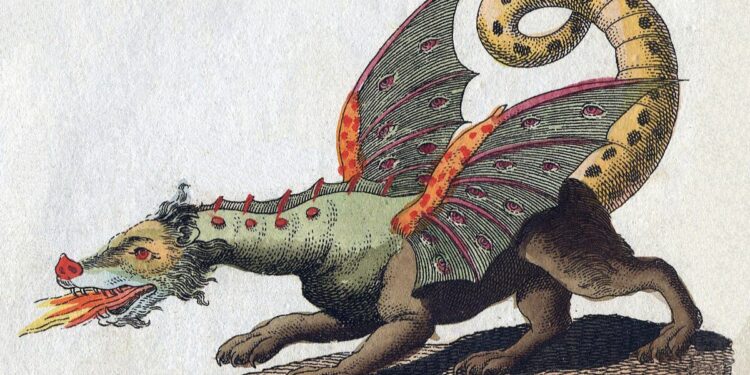NASA’s Dragon capsule safely splashed down near Florida, bringing astronauts home. A rare sighting of dolphins near the spacecraft amazed viewers.
Dragon Capsule Battleground:
After nine months onboard the International Space Station (ISS), NASA’s Dragon capsule successfully splashed down in Tallahassee, Florida, on March 18, 2025, returning four astronauts home. Aleksandr Gorbunov, a Russian cosmonaut, and NASA astronauts Suni Williams, Butch Wilmore, and Nick Hague were among the returning crew.
But the unexpected guests, the dolphins, added even more specialness to this splashdown. Shortly after the Dragon capsule landed in the ocean, a group of dolphins surrounded it, making for an enthralling and touching sight. There were even jokes from NASA commentators that these aquatic animals were a “honorary part of the recovery team.”
Advancing Human Spaceflight:
The Dragon capsule’s latest mission not only brought astronauts safely back to Earth but also demonstrated the growing reliability of commercial spacecraft. SpaceX’s advancements in reusable technology have made space travel more sustainable, reducing costs and ensuring safer missions. With its advanced heat shield, precision landing system, and efficient recovery process, the Dragon capsule continues to be a key player in future space missions. Its success paves the way for longer, more ambitious journeys, including lunar and Martian explorations under NASA’s Artemis program.
Marine Life and Space Exploration:
Interest in the connection between marine life and human space activity has grown as a result of the unexpected appearance of dolphins during the Dragon capsule splashdown. Dolphins are extremely sensitive to environmental changes and acoustic vibrations, which makes their presence close to the capsule especially fascinating.
Researchers think that examining these interactions may shed light on ocean conditions, marine behaviour, and possibly the effects of space travel on Earth’s ecosystems. This rare incident serves as a reminder of the close ties that exist between science, nature, and technology and shows how space exploration frequently crosses with Earth’s natural beauties.
Dragon Capsule:
One of the most sophisticated spaceships for carrying people to and from orbit is the Dragon capsule, which was created by SpaceX. It was built to safely return people to Earth while shielding them from the extreme heat of re-entry with a heat shield. After slowing down with the use of parachutes, the spaceship splashes softly into the ocean. Another accomplishment in NASA’s space exploration endeavours was the safe return of the Dragon capsule’s occupants from their nine-month stay aboard the International Space Station.
Journey Home:
The return journey from space is always a complex process. Here’s how it happened:
- Departure from the ISS: The Dragon capsule is undocked from the International Space Station, beginning its journey back to Earth.
- Re-entry into Earth’s Atmosphere: The spacecraft endured extreme temperatures as it passed through Earth’s atmosphere, protected by its heat shield.
- Parachute Deployment: As it got closer to Earth, the Dragon capsule deployed its parachutes, allowing for a safe and slow descent.
- Splashdown: The spacecraft finally splashed down in the ocean, where recovery teams were waiting.
Dolphins: Unexpected Recovery Team
Dolphins are renowned for their playfulness, intelligence, and curiosity. They frequently explore strange items in the ocean, but it was unusual and amazing to witness them close to a spacecraft splashdown.
Only a few minutes after splashdown, the pod of dolphins circled the capsule, producing a singular, nearly cinematic scene. NASA commentators couldn’t resist making a humorous joke about the dolphins, referring to them as an “honorary part of the recovery team.”
Some experts believe that dolphins might have been attracted to:
- The vibrations and sounds of the capsule hitting the water.
- The movement of recovery boats in the area.
- Their natural curiosity about new objects in their environment.
Safe splashdowns are crucial, and NASA and SpaceX have put a lot of effort into making sure that people returning from space enjoy a safe landing. Water landings facilitate the recovery of the spacecraft and crew by lowering impact forces.
The successful splashdown of the Dragon capsule demonstrates how NASA and SpaceX’s collaboration is still revolutionizing space travel. Future trips will be more economical and environmentally friendly thanks to reusable spaceships like Dragon.
Significance of This Mission:
This mission highlights several key advancements in space travel:
- Safe and reliable transportation: The Dragon capsule’s return process has become routine, proving its reliability.
- International collaboration: The mission included both American astronauts and a Russian cosmonaut, showing continued cooperation despite global tensions.
- Scientific achievements: During their time in space, astronauts conducted important experiments that could help future space missions and medical research. With every successful mission, NASA and SpaceX move one step closer to making space travel more efficient and accessible.
Future of Space Travel:
With the success of the Dragon capsule splashdown, attention now turns to:
- Upcoming Moon and Mars missions: NASA is preparing for future missions to the Moon (Artemis program) and eventually Mars.
- Advancements in reusable spacecraft: SpaceX continues to improve the Dragon capsule and other spacecraft like Starship for deep-space missions.
- Commercial space travel: Private companies, including SpaceX and Blue Origin, are working toward making space travel available for civilians. The Dragon capsule’s safe return is just another step in humanity’s journey toward a future in space.
Conclusion:
Another significant event for NASA and SpaceX was the Dragon capsule’s return on March 18, 2025. Dolphins swarmed the spaceship in the ocean, capturing a unique and enchanting moment in addition to safely returning the astronauts home.
This surprising experience served as a reminder that nature never ceases to amaze and inspire us, even in the immensity of space travel. Space missions are made even more memorable by experiences like these as we continue our trek beyond Earth.

























